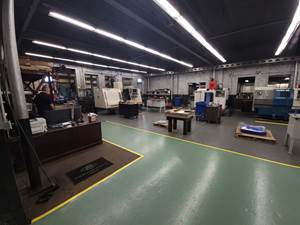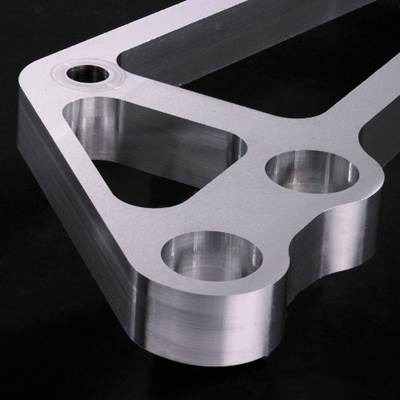Linear Scales Improve Lathe Accuracy
When Ford Automotive offered a contract to this Canadian automotive manufacturer for producing rear toe links, the company found its lathes simply weren’t capable of attaining the accuracy required to complete the job. In addition to enabling the company to win the contract, installing Heidenhain linear scales on the lathes reduced scrap rates and the need for frequent operator adjustments.
When equipment deficiencies prevent a shop from taking on a tough job, investing in flashy new machine tools isn’t always the most expedient remedy. Upgrading specific components to address the root of the problem can be a more economical way to improve machine performance.
Global automotive manufacturer TRW did just that at its Automotive Linkage and Suspension Systems Division in St. Catharines, Ontario, Canada. When Ford Automotive considered awarding the company a contract to manufacture rear toe links for its Navigator and Expedition SUVs, the plant found that its traditional lathes were not accurate enough for the task. Upgrading the lathes with linear scales from Heidenhain (Schaumburg, Illinois) provided the accuracy improvements needed to not only win that contract, but also address some long-standing problems in the shop’s manufacturing operations.
One component of the rear toe links, which are used to adjust the parallelism of the rear-wheel tires, had to be produced to a tight roundness standard. The company needed to maintain an accuracy of ±0.001 inch on that component, a ball stud in the tie rod ends on the links. "This was really pushing the limits of what a standard lathe is capable of holding," explains Stuart Lockhart, the plant’s manufacturing engineering
supervisor.
The problem was that the plant’s lathes relied solely on rotary encoders to track machine positioning. A rotary encoder indicates the position of the cutting tool by tracking the number of revolutions in the motor that drives the ballscrew. But the encoders don’t account for the fact that high traverse speeds and acceleration/deceleration rates can subject the ballscrew to significant friction. Thermal expansion resulting from that friction can change the position of the nut that travels along the ballscrew—and by extension, the position of the cutting tool.
The plant had regularly used its four 30-horsepower lathes on other jobs for about 5 years before the toe link job came into play. However, thermal expansion and backlash caused issues on even these successful jobs. Mr. Lockhart says the problems were especially noticeable during the daily warm-up of the lathes. As the machines heated up, their ballscrews and spindles would inevitably grow, adversely affecting accuracy. Also, whenever an operator went on break and allowed a machine to cool down, the components changed yet again. Operator adjustments were common, and high scrap rates seemed inevitable. And with the new rear toe-link job, the stakes and requirements would be even higher.
To address these difficulties, the shop turned to Elliot-Matsuura Canada, which provides sales and service to high-tech machining industries. "We wanted to not only increase the accuracy of TRW’s lathes, but also take the thermal growth of the ballscrew out of the machines’ equation," says Jim Earl, senior CNC service engineer at Elliot. "I knew that upgrading to Heidenhain linear scales would fix them right up by serving as a reliable direct-measurement source, because they compensate well for many machine imperfections."
After conducting capability studies to justify the cost of the upgrade, the company moved ahead to retool its four lathes at Elliot’s facility in Oakville, Ontario. After installing a Heidenhain LC 493 absolute linear scale system on each lathe via custom brackets, Elliot completed the electrical interface to the controls and set the proper parameters. The LC 400 series scales are of a sealed, slimline variety that provides true absolute position value without requiring any previous traverse. Unlike rotary encoders, a properly fitted linear scale measures the machine’s actual, final movement, keeping the cutter where it needs to be.
The upgrade process took only a few days, and subsequent testing showed the improvement that TRW needed. The Ford job turned out to be a success. Moreover, tests showed that the upgrade reduced scrap rates and enabled TRW to exceed its minimum requirement of 1.67 Ppk (process performance index, a measure of the long-term performance of a process). "These upgrades also ended up making the lathes even easier for the operators to use because the need for constant adjusting had been eliminated," Mr. Earl says. "Thanks to the linear upgrades, there are no more concerns about warm-up or cool-down of the machines. They are accurate and ready to go as soon as they’re turned on."
Related Content
When Handing Down the Family Machine Shop is as Complex as a Swiss-Turned Part
The transition into Swiss-type machining at Deking Screw Products required more than just a shift in production operations. It required a new mindset and a new way of running the family-owned business. Hardest of all, it required that one generation let go, and allow a new one to step in.
Read MoreFrom Tradition to Transformation: Century-Old Manual Machine Shop Adds CNCs
After 122 years of working with manual mills and lathes, this fifth-generation shop acquired assets of a local CNC machining business and hired the owner. Here’s how it’s going a year later.
Read MoreKey CNC Concept No. 1—The Fundamentals Of Computer Numerical Control
Though the thrust of this presentation is to teach you CNC usage, it helps to understand why these sophisticated machines are so important. Here are but a few of the more important benefits offered by CNC equipment.
Read MoreWhen to Use Custom Macros With a CAM System
Custom macros can offer benefits even when using a CAM system to prepare programs – but must be implemented with the right considerations.
Read MoreRead Next
Accuracy Gain From Linear Encoders
If the position of a machine tool’s axis is measured using a rotary encoder, then potentially the ballscrew is being asked to perform two contradictory functions. The ballscrew both drives the axis into position and indicates that position—because the ballscrew lies in between the encoder and the moving element of the machine. Control technology supplier Heidenhain calls this “semiclosed-loop” operation.
Read MoreAccuracy Gain From Linear Encoders
If the position of a machine tool’s axis is measured using a rotary encoder, then potentially the ballscrew is being asked to perform two contradictory functions. The ballscrew both drives the axis into position and indicates that position—because the ballscrew lies in between the encoder and the moving element of the machine. Control technology supplier Heidenhain calls this “semiclosed-loop” operation.
Read MoreThe Cut Scene: The Finer Details of Large-Format Machining
Small details and features can have an outsized impact on large parts, such as Barbco’s collapsible utility drill head.
Read More
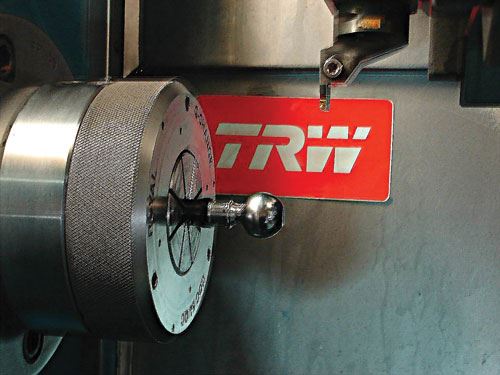
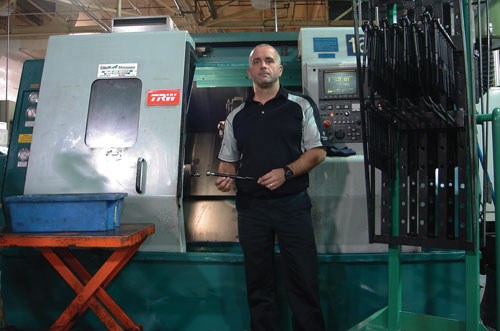
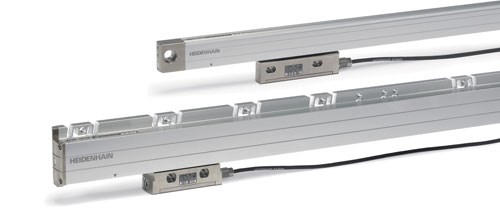










.png;maxWidth=300;quality=90)







